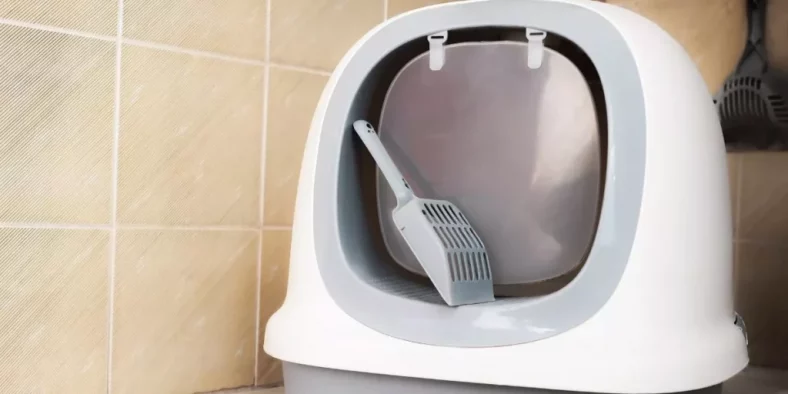How Do Self-Cleaning Litter Boxes Improve Cat Hygiene?

With self-cleaning litter boxes, you can provide your feline friend with a cleaner and more hygienic environment without the hassle of constant scooping. Imagine never having to worry about unpleasant odors or the risk of harmful bacteria lurking in your cat’s litter box. These innovative solutions offer a hands-free way to maintain cleanliness, but have you ever wondered how they actually work to keep your cat healthier and happier? Keep on to discover the science behind these time-saving devices and how they revolutionize cat care.
Minimize Odors
To reduce unpleasant smells in your home, consider using a self-cleaning litter box. Traditional litter boxes require manual scooping, leading to lingering odors. With a self-cleaning box, waste is promptly removed into a hidden compartment, significantly reducing smell. These boxes often contain carbon filters that trap odors, ensuring your home remains fresh.
You’ll appreciate the convenience of not having to scoop waste daily. Self-cleaning litter boxes automatically sift through the litter, leaving a clean surface for your cat’s next use. This constant maintenance prevents ammonia build-up, a major cause of strong odors. Your feline friend will also benefit from a cleaner environment, promoting better hygiene habits.
Reduce Bacterial Growth
Consider incorporating a self-cleaning litter box to minimize bacterial growth and maintain a healthier environment for your cat. Traditional litter boxes can become breeding grounds for harmful bacteria due to the accumulation of waste. These bacteria can pose health risks to your feline friend and even to you and your family.
Self-cleaning litter boxes work by automatically removing waste shortly after your cat uses it, reducing the time waste sits in the box. By promptly removing waste, self-cleaning litter boxes help prevent bacteria from multiplying and spreading. This can lead to a decrease in unpleasant odors and a cleaner litter box overall.
Reducing bacterial growth is essential for your cat’s health and wellbeing. Bacteria can cause infections and other health issues if allowed to thrive in the litter box. With a self-cleaning litter box, you can create a more sanitary environment for your cat, minimizing the risk of bacterial-related illnesses.
Enhance Cleanliness
For improved cleanliness in your cat’s environment, utilizing a self-cleaning litter box can be highly beneficial. These innovative litter boxes are designed to automatically scoop and dispose of waste, ensuring that your cat always has a clean space to use. By promptly removing waste, self-cleaning litter boxes help prevent odor buildup, creating a more pleasant environment for both you and your feline companion. Additionally, the reduced presence of waste in the litter box can minimize the risk of bacteria growth, promoting better hygiene for your cat.
With traditional litter boxes, waste accumulation can lead to messy conditions that require frequent manual cleaning. Self-cleaning litter boxes simplify this process by handling waste removal automatically, saving you time and effort. This convenience not only enhances cleanliness but also contributes to a healthier living environment for you and your cat. Therefore, investing in a self-cleaning litter box is a practical way to maintain a hygienic space for your beloved pet.
Prevent Urinary Tract Infections
Improving your cat’s hygiene with a self-cleaning litter box can help prevent urinary tract infections by maintaining a clean and sanitary environment for your pet. Urinary tract infections (UTIs) are a common issue in cats, and a dirty litter box can contribute to their development. When your cat’s litter box isn’t cleaned regularly, bacteria can grow and multiply, increasing the risk of UTIs.
A self-cleaning litter box ensures that waste is promptly removed, reducing the chances of bacterial growth. By eliminating waste efficiently, these litter boxes help keep the litter area clean and free from harmful bacteria that could lead to UTIs. Additionally, some self-cleaning litter boxes feature sensors that detect when your cat has used the box, allowing for immediate cleaning and minimizing the time waste sits in the box.
Promote Regular Litter Box Cleaning
Encourage consistent maintenance of the litter box to ensure a hygienic environment for your cat. Regular cleaning is vital in preventing the buildup of waste, bacteria, and odors that can be harmful to your feline friend. Aim to scoop the litter box at least once a day, removing solid waste and clumps to keep it clean and inviting for your cat. Neglecting to clean the litter box regularly may lead to your cat avoiding the dirty box, resulting in accidents around the house.
In addition to daily scooping, it’s essential to deep clean the litter box and change the litter regularly. Empty the entire box, wash it with unscented soap, rinse thoroughly, and refill it with fresh litter. How often you should completely change the litter depends on the type of litter used and the number of cats using it. By sticking to a routine cleaning schedule, you not only maintain a hygienic environment for your cat but also promote their overall well-being.
Trending Products










